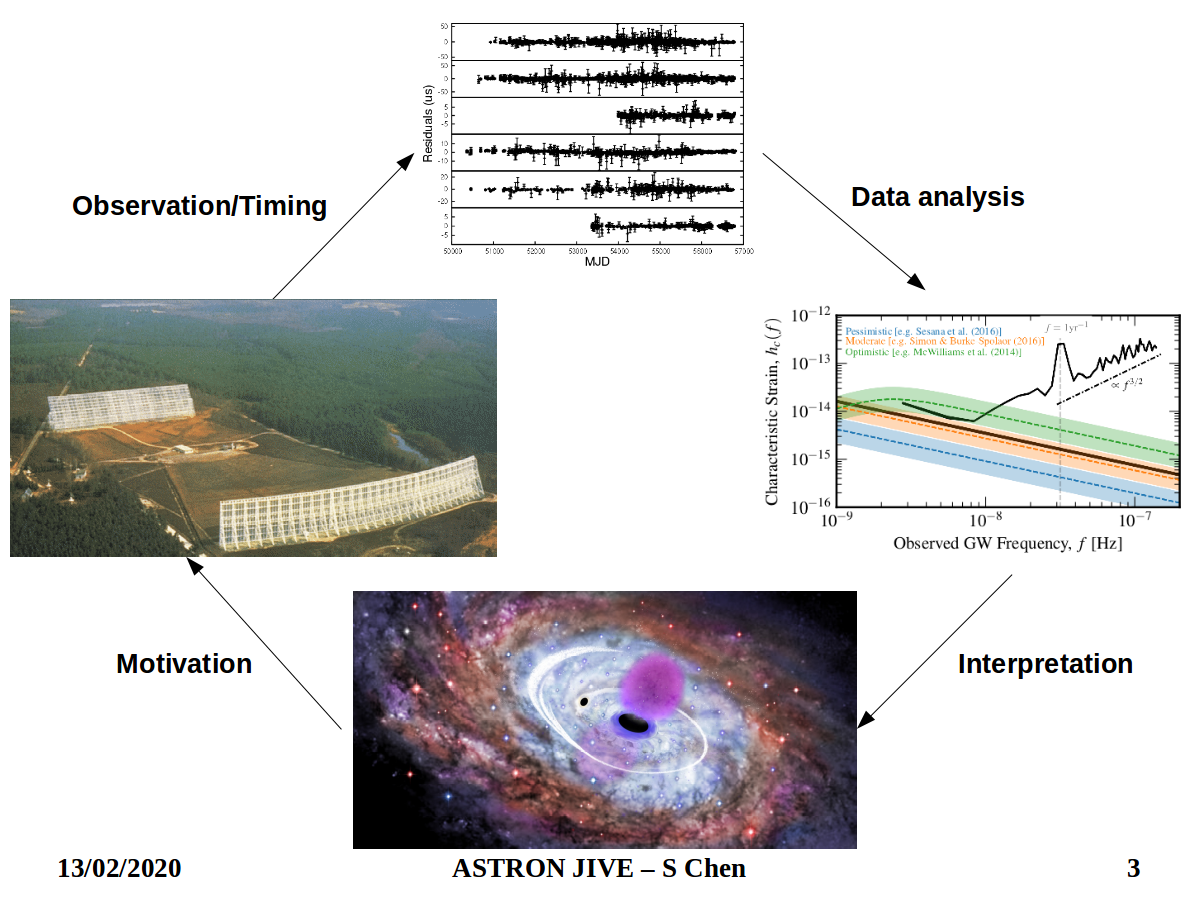Daily Image
13-02-2020Constraining galaxy and black hole binary mergers with pulsars (Colloquium, Siyuan Chen, CNRS Orléans)
| Submitter: | Siyuan Chen |
| Description: | We have strong evidence that super massive black holes reside in most galaxies. Galaxies have also been observed to merge, consequently the central black holes should also form a binary and eventually merge. These super massive black hole binaries (SMBHBs) emit gravitational waves (GWs) as they spiral into each other. The superposition of all the GWs emitted by the cosmic population of SMBHBs form a gravitational wave background (GWB). This GWB affects the time of arrivals (TOAs) of the radio signals from millisecond pulsars (MSPs) in a characteristic and correlated fashion. Pulsar Timing Arrays (PTAs) make use of this fact and aim to detect GWs by precisely timing an array of ultra stable MSPs. One of the prime targets for PTAs is the GWB from a population of SMBHBs, which is strongly linked to the galaxy merger rate. The GWB frequency spectrum can be computed by integrating the emission of one single binary over the whole population. I will present a parametric model to compute the strength of the GWB from the population of SMBHBs in terms of astrophysical observables. These include the galaxy stellar mass function, pair fraction and merger time scale as well as the galaxy mass - black hole mass relation with scattering. All of which are interesting quantities, that have already been measured and constrained. Using a PTA upper limit on the GWB, we can directly compare and combine the constraints on these astrophysical observables from electromagnetic observations with those from PTAs. I will present results with our nested sampling algorithm, showing how much (or little) PTAs can tell us about galaxy and black hole mergers. This model can also be implemented directly into the GW analyses that are performed on the International Pulsar Timing Array datasets, the most recent being data release 2 (DR2) (Perera et al. 2019) and consisting of data from North American, European and Australia MSP observations. I will show preliminary results from the GWB search on the IPTA DR2. |
| Copyright: | Siyuan Chen |
| Tweet |  |
